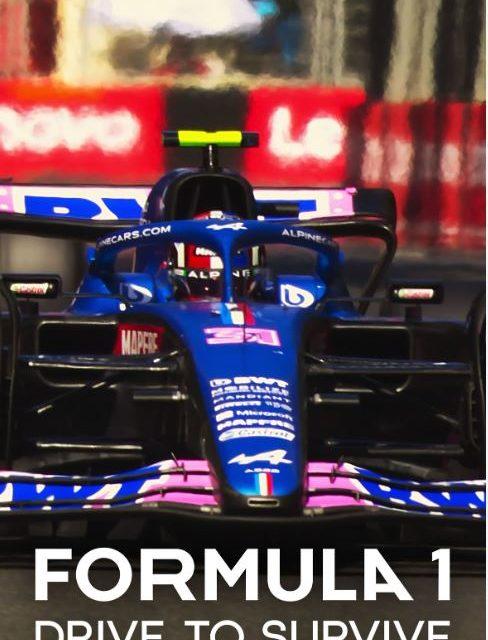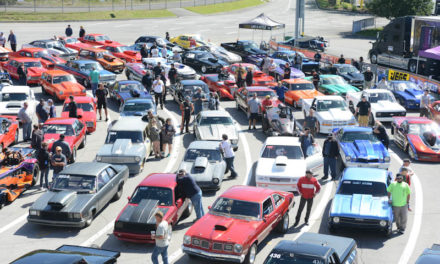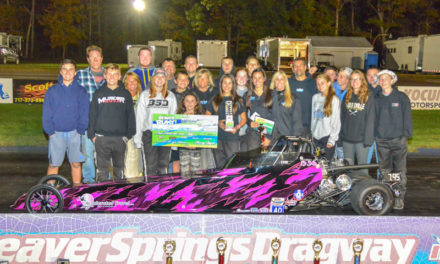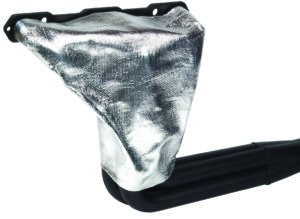
Miami Grand Prix

Last week I had the opportunity to sit down and watch the Formula 1 race from Miami. As a very casual fan of the sport, it was phenomenal. I’m not just talking about the racing itself, but the whole spectacle of the event. From the major celebrity sightings to the “marina” in one of the turns to transforming the parking lot and surrounding area of the football stadium into the track. Every pan of the camera is showing something else that is outrageously expensive and only dreamed of by any other form of motorsports racing. From the data collection of the teams to the amount of worldwide TV coverage, Formula 1 is head and shoulders above any other motorsports, but why? And more importantly, how and is it a formula that drag racing can follow?
As with many things, much of this comes down to money. Formula 1 has spent years as the dominant force in international motorsports and rakes in billions of dollars in revenue each year ($2.57 billion in 2022). This allows them to do some really cool things like interactive maps for everyone attending and running races in exotic locales like Monaco and Singapore among many others. Cars, equipment and teams are flown in and out as simply as you or I go to the grocery store. None of this is possible without massive amounts of backing. This also allows the sport to be international and that helps with the sponsorship dollars. From a company perspective, it’s easier to grab marketing dollars from a bunch of different markets and departments than just the US side alone.
While we could sit back and debate what came first, the money or what the money allows them to do, that is not going to help bring drag racing closer to their level. Let’s look at the differences though and see what we could do to try to emulate some of the success. Our sport is obviously quite different from Formula 1. They have the advantage of changing up their tracks to suit the location and give the drivers’ something different for each event. While the weather conditions may be different at drag strips around the country (and globe), we have the same 1/4 mile (or 1/8 mile) at every event. Our sport is very consistent in that aspect but it also requires us to have specialized facilities that are always race tracks whereas when F1 is not in town, many of the tracks are parking lots or local roads. Could we make our tracks easier to reconfigure for big events? Maybe, but it would require a timing system that is much easier to set up and the ability for a massive amount of adjustment in whatever cars are going to run at these facilities. I doubt we would ever be able to see nitro cars do this, but the no prep guys are just about there in this aspect.
Another major factor in current popularity of Formula 1 (especially in the US) is the Netflix series Formula 1: Drive to Survive. This brought the struggle of the teams and drivers into the homes of everyone. It is a very well done production with good editing and provocative story lines. Could something like that be done for drag racing? Sure, we would just need someone to believe in the story and focus on a certain series. Obviously one of the NHRA pro classes would be an “easy” place to start, but I think a just as compelling story could be found in the PDRA or Lucas Oil Sportsman Series as well.
From my perspective though, the biggest hill we have to climb is that our sport is so disjointed. We have all these different factions playing in the same drag racing space with limited crossover. We have NHRA, PDRA, IHRA, WDRA, no prep/outlaw, nostalgia and numerous small bracket and class racing associations throughout the country. Formula 1 all funnels into one coffer which allows them move more or less in unison towards their goals with much less infighting. The flip side of this is that it lends itself to corruption issues, which they have had to deal with in the past. I am not sure we have it so wrong with the multiple associations, but it certainly doesn’t help us when our leagues are all fighting each other over the same pot of dollars/participants/fans. While NHRA has been at the forefront for sponsorship dollars, participants and fans for much of the last 70 years, that may not always be the case in the future. Whichever association figures out how to grow the sport will be in the best position to follow in the successful footsteps of Formula 1. -Franklin DiBartolomeo






